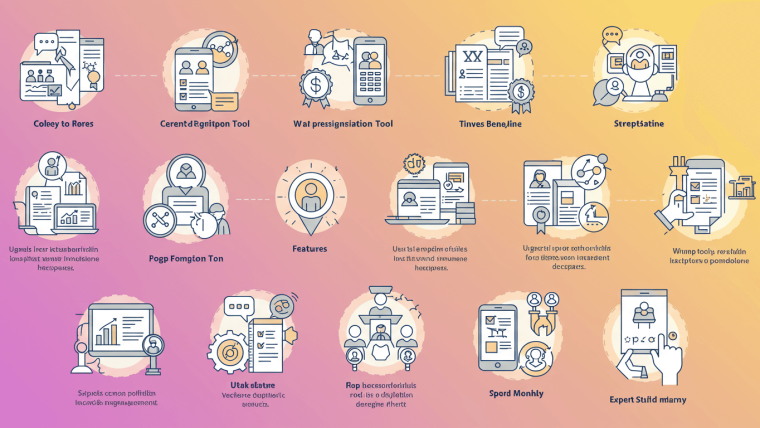Virtual events have transformed from emergency solutions to strategic business tools. Yet many organizers struggle with a persistent challenge: keeping attendees engaged when they’re just a click away from checking email, scrolling social media, or walking away entirely.
The statistics tell a sobering story. Research shows that virtual event attendees typically engage for only 7-10 minutes at a time before their attention wanes. Unlike in-person events where social pressure and physical presence naturally maintain focus, virtual environments require deliberate engagement strategies to capture and hold audience attention.
Understanding the Virtual Engagement Challenge
Virtual event engagement operates on different principles than traditional in-person gatherings. Attendees face unique distractions that event organizers must acknowledge and address.
The Attention Deficit Reality
Home and office environments present constant interruptions. Participants might be managing children, responding to urgent work messages, or simply battling the comfort of their familiar surroundings. Unlike conference halls where attendees commit to being present, virtual spaces compete with every other application on a participant’s device.
Technical Barriers to Engagement
Poor audio quality, laggy video connections, and confusing platform interfaces create friction that kills engagement momentum. When participants struggle with basic functionality, they disengage entirely rather than persevere through technical difficulties.
The Anonymity Factor
Virtual events often provide attendees with a sense of anonymity that can work both for and against engagement. While some participants appreciate the reduced social pressure, others use this invisibility as permission to multitask or disengage completely.
Pre-Event Engagement Strategies
Successful virtual event engagement begins long before participants log into your platform. The preparation phase sets expectations and builds anticipation that carries through to the actual event.
Create Anticipation Through Content
Share teaser content, speaker previews, and agenda highlights across your marketing channels. Develop a content calendar that builds momentum toward your event date. Consider creating short video messages from keynote speakers or behind-the-scenes glimpses of event preparation.
Optimize Registration and Onboarding
Streamline your registration process while gathering information that will help personalize the experience. Ask registrants about their specific interests, challenges, or questions they hope to have answered. This data becomes valuable for tailoring content and facilitating relevant networking connections.
Provide Technical Preparation Resources
Send attendees platform tutorials, system requirements checklists, and troubleshooting guides well in advance. Consider hosting brief technical orientation sessions for participants unfamiliar with your chosen platform. Nothing destroys engagement faster than technical frustration at the start of an event.
During-Event Engagement Techniques
Once your virtual event begins, maintaining audience attention requires active effort and strategic planning throughout the entire experience.
Interactive Polling and Q&A Sessions
Incorporate live polls every 10-15 minutes to maintain active participation. Ask both content-related questions and fun, personality-driven queries that help participants feel connected to the broader audience. Use polling results as conversation starters and give speakers permission to adjust their presentations based on audience responses.
Q&A sessions become more dynamic when you establish clear submission processes and dedicate specific time blocks for responses. Consider appointing a dedicated moderator to curate questions and ensure speakers address the most relevant inquiries.
Breakout Room Networking
Facilitate meaningful connections through structured breakout sessions. Rather than random assignments, group participants based on industry, experience level, or specific interests gathered during registration. Provide conversation starters and clear objectives for each breakout session.
Time management becomes crucial for breakout room success. Clearly communicate duration expectations and provide gentle warnings before transitions. Consider appointing volunteer facilitators for each room to guide discussions and ensure participation from quieter attendees.
Gamification Elements
Introduce point systems, challenges, or scavenger hunts that reward active participation. Create leaderboards that recognize engaged attendees without creating unhealthy competition. Simple gamification techniques include awarding points for asking questions, participating in polls, or completing session feedback forms.
Multi-Format Content Delivery
Vary your presentation formats throughout the event to maintain visual and auditory interest. Combine traditional presentations with panel discussions, fireside chats, product demonstrations, and case study deep-dives. Change speakers frequently and ensure smooth transitions between different content types.
Technology Tools for Enhanced Engagement
Selecting the right technological solutions can dramatically improve your virtual event engagement rates and overall participant satisfaction.
Platform Selection Criteria
Choose platforms that prioritize user experience and offer robust engagement features. Essential capabilities include reliable video/audio quality, easy screen sharing, breakout room functionality, and integrated polling tools. Consider platforms that offer mobile accessibility and don’t require complex software downloads.
Integration Capabilities
Select tools that integrate seamlessly with your existing marketing and CRM systems. This integration enables better data collection, follow-up communication, and ROI measurement. Look for platforms that offer API access or pre-built integrations with popular business tools.
Real-Time Engagement Monitoring
Utilize analytics dashboards that provide real-time engagement metrics. Monitor attendance patterns, participation rates, and drop-off points to make immediate adjustments during your event. Some platforms offer heat mapping features that show which content segments generate the most engagement.
Post-Event Engagement and Follow-Up
Virtual event engagement shouldn’t end when participants log off. Strategic follow-up communication and content sharing can extend the event’s impact and build anticipation for future gatherings.
Content Accessibility and Sharing
Provide recorded sessions, presentation slides, and resource lists to all attendees within 24-48 hours after your event concludes. Create searchable content libraries that allow participants to revisit specific segments or catch sessions they missed during the live event.
Community Building Initiatives
Establish online communities or discussion forums where attendees can continue conversations sparked during your event. Consider creating LinkedIn groups, Slack channels, or dedicated community platforms that facilitate ongoing networking and knowledge sharing.
Feedback Collection and Analysis
Deploy comprehensive feedback surveys that gather both quantitative ratings and qualitative insights about the virtual event experience. Ask specific questions about engagement techniques, content relevance, and technical performance. Use this feedback to refine your approach for future virtual events.
Measuring Virtual Event Engagement Success
Successful virtual event engagement requires ongoing measurement and optimization based on concrete data rather than assumptions.
Key Performance Indicators
Track metrics that reflect true engagement rather than just attendance numbers. Monitor average session duration, poll participation rates, Q&A submission volumes, and breakout room activity levels. Compare these metrics across different content segments to identify what resonates most with your audience.

Long-Term Impact Assessment
Measure engagement success through post-event surveys, social media mentions, and follow-up content consumption. Track how many attendees join your ongoing community initiatives or register for future events. These indicators provide insights into lasting engagement rather than momentary attention.
Continuous Improvement Framework
Establish systematic processes for collecting, analyzing, and implementing engagement feedback. Create documentation that captures successful techniques and identifies areas for improvement. Build this knowledge base over time to enhance each subsequent virtual event.
Transforming Virtual Events Into Engaging Experiences
Virtual event engagement success depends on understanding your audience, leveraging appropriate technology, and maintaining active facilitation throughout the entire experience. The most successful virtual events feel less like webinars and more like interactive experiences that provide genuine value and meaningful connections.
Start implementing these engagement strategies gradually, testing different approaches with your specific audience to discover what works best for your industry and event format. Remember that virtual event engagement is a skill that improves with practice and careful attention to participant feedback.
Ready to transform your virtual events? Begin by auditing your current engagement strategies and identifying three specific techniques from this guide to implement in your next virtual gathering.







Webinar Analytics: A Complete Guide to Measuring Success and Improving Performance
The Ultimate Webinar Follow-Up Strategy to Turn Attendees into Customers
Webinar Accessibility Best Practices: How to Make Your Online Events Inclusive for All
Webinar Personalization: Tailoring Content to Audience Segments for Maximum Engagement